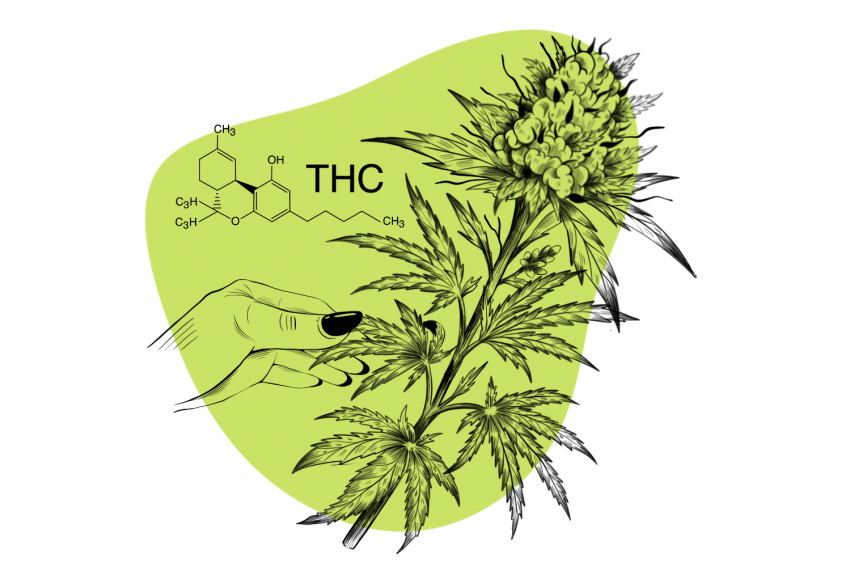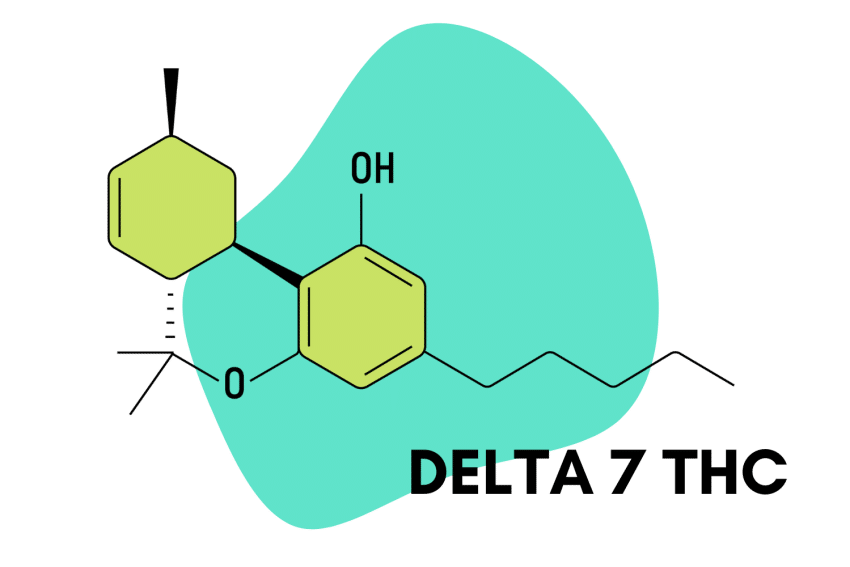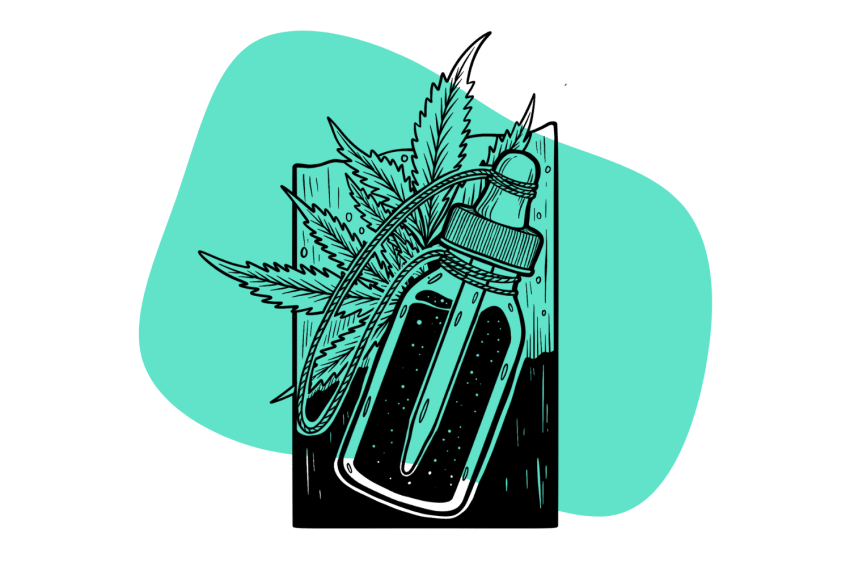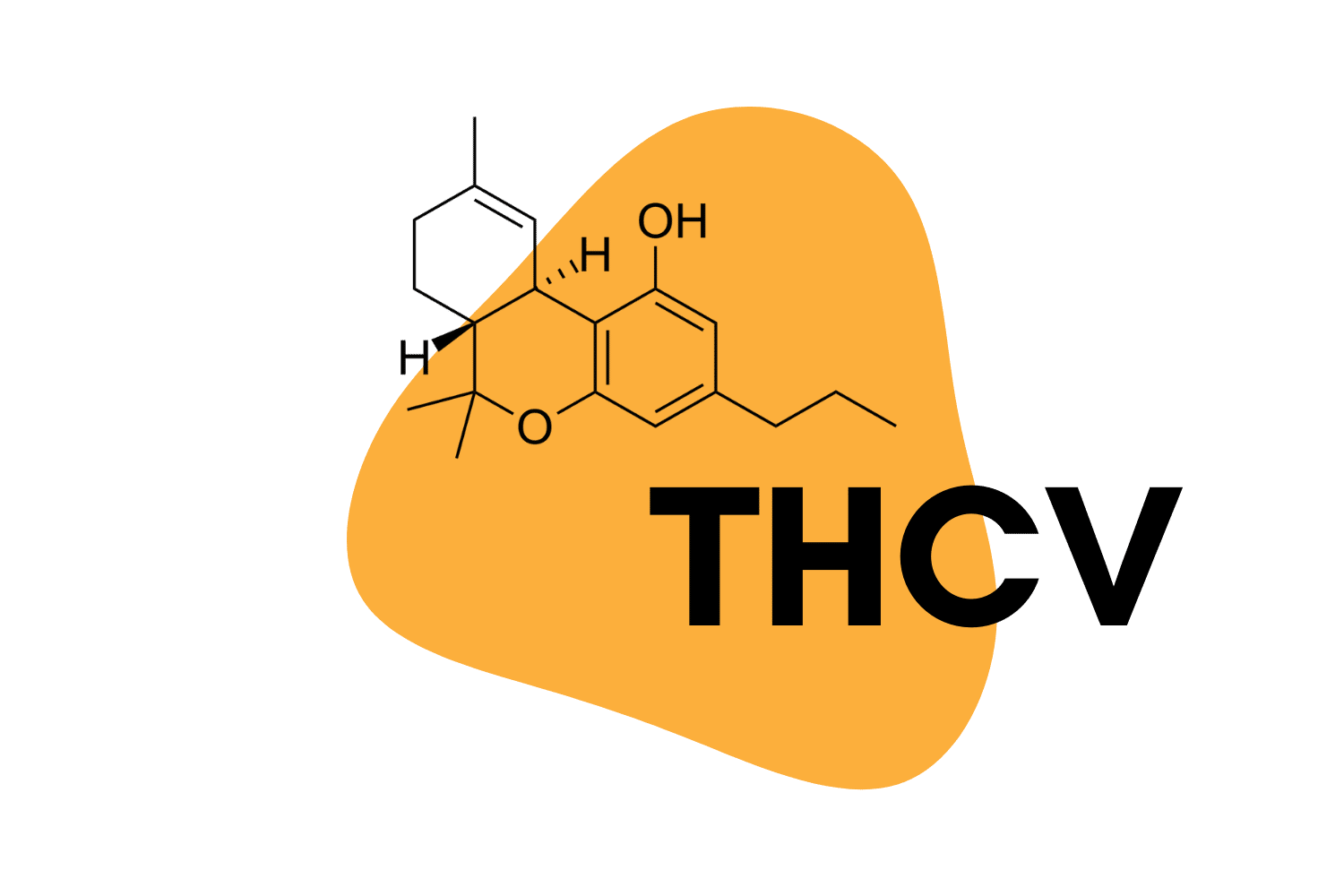What Is the Endocannabinoid System?
The endocannabinoid system is a complex cell-signaling system that plays a role in regulating homeostasis (balance) within the human body. It’s also the primary mechanism through which the cannabinoids from the marijuana plant exert their effects.
The endocannabinoid system (ECS) is a neuromodulatory network that helps control things like thinking, feeling, attention, motivation, and virtually all organ systems in the body.
You can imagine the ECS as an orchestra conductor coordinating the musicians to produce a harmonious and cohesive performance.
Just like the conductor, the ECS acts as an intermediary to help the other organ systems (brain, liver, immune system, cardiovascular system, etc.) do their jobs effectively.
The ECS has three main components:
- Endocannabinoids — special chemicals that act as both hormones and neurotransmitters to transmit information throughout the system.
- CB1 & CB2 endocannabinoid receptors — endocannabinoids bind to these protein complexes, causing various changes in the cell.
- Enzymes — special proteins tasked with breaking down endocannabinoids when they’re no longer needed.
Let’s uncover the inner workings of the endocannabinoid system and how it controls everything from appetite and mood to the immune system.
When Was the Endocannabinoid System Discovered?
The first endocannabinoid receptor, creatively named “cannabis receptor type one” or “CB1” for short, was discovered in rat brains in 1988 by a group of researchers led by Allyn Howlett at St. Louis University School of Medicine [1].
The researchers found that the CB1 receptor is present in several brain areas, including the cerebral cortex, hippocampus, and basal ganglia — parts of the brain that control thinking and memory — and conducted experiments to determine the effects marijuana has on the CB1 receptor.
They found that THC (tetrahydrocannabinol), the chemical in marijuana that makes you feel high, activates the CB1 receptor and changes the way messages are sent in the brain (neurotransmitter activity) [1].
The second cannabinoid receptor, CB2, was discovered in 1993 by a group of researchers at the Hebrew University of Jerusalem, led by Raphael Mechoulam. CB2 receptors are found in the immune system, the peripheral nervous system, and many internal organs.
This discovery helped the scientific community understand more about how the ECS works and how cannabis and its chemicals might treat certain diseases.
What Does The Endocannabinoid System Do?
The endocannabinoid system (ECS) keeps the body healthy by supporting internal system balance. It works sort of like a read receipt — when a signal is sent from one part of the body to another via the nervous system, the ECS sends a signal in reverse to confirm the message was received.
There’s a lot more going on here than this analogy can articulate, but this is the general action taking place.
By improving communication channels within the body, the ECS is integral to regulating immune function, appetite, pain, mood, memory, energy metabolism, and the sleep-wake cycle.
The ECS acts through a network of signaling molecules called endogenous cannabinoids, two types of receptors, and various enzymes.
Let’s have a closer look at the cannabinoid signaling system.
1. Endogenous Cannabinoids (Signaling Molecules)
Endogenous cannabinoids, or “endocannabinoids,” are chemical messengers the body produces when responding to changes in the internal environment.
Endocannabinoids are released into the bloodstream or interstitial fluid (fluid around our cells) and bind to cannabinoid receptors on different cells throughout the body.
There are two primary endocannabinoids:
- Anandamide — Also known as N-arachidonoylethanolamine or AEA, this was the first endocannabinoid to be discovered in 1992. Its nickname is “the “bliss molecule” or “spirit molecule” for its euphoric effects. Anandamide is involved in appetite, pain, mood, and memory. Interestingly, it has a chemical structure similar to THC, the primary psychoactive compound in cannabis [3].
- 2-Arachidonoylglycerol (2-AG) — This cannabinoid’s name doesn’t quite flow off the tongue like its counterpart. Still, it’s the second most important cannabinoid identified in the body, synthesized from arachidonic acid and glycerol. 2-AG is involved in processes that support appetite, pain, mood, memory and learning, and immune function.
2. Endocannabinoid Receptors
The endocannabinoid receptors are proteins found on cells that bind to specific chemicals, in this case, endogenous cannabinoids, to unlock a unique set of effects.
There are two primary cannabinoid receptors:
- CB1 receptors — Primarily concentrated in the brain and central nervous system.
- CB2 receptors — Primarily expressed in the immune system and peripheral tissues.
3. Enzymes
Enzymes are proteins that initiate chemical reactions in the body.
In the ECS, enzymes play a role in both the production and degradation of endocannabinoids. They help regulate the levels of endocannabinoids in the body and play an important role in the system’s overall health.
There are several enzymes involved in the ECS, including:
- Fatty acid amide hydrolase (FAAH) — This enzyme breaks down anandamide.
- N-acylphosphatidylethanolamine-hydrolyzing phospholipase D (NAPE-PLD) — This enzyme is involved in anandamide synthesis from N-acylphosphatidylethanolamine (NAPE).
- Monoacylglycerol lipase (MAGL) — This enzyme breaks down 2-AG.
- DAGLalpha and DAGLbeta — This enzyme initiates 2-AG synthesis from diacylglycerol.
How Does The Endocannabinoid System Work?
The endocannabinoid system (ECS) regulates various physiological processes in the body, including pain, mood, appetite, memory, and immune function.
When there is a change in the body’s internal environment, such as pain or inflammation, the ECS helps restore balance by releasing endocannabinoids. These bind to and activate the cannabinoid receptors, triggering a series of events within the cell.
Ultimately, this reduces pain, inflammation, or other physiological responses, thus helping to maintain balance (homeostasis).
Here is a brief overview of how the endocannabinoid system works:
1. Endocannabinoid Synthesis
The body can make endocannabinoids in different ways. One includes the NAPE pathway, which involves the enzyme N-acylphosphatidylethanolamine-hydrolyzing phospholipase D (NAPE-PLD), and the DAG pathway, with the enzymes DAGLalpha and DAGLbeta.
These cannabinoids are produced on demand in response to various stimuli, such as environmental changes, physical activity, or stress.
The enzymes we’ve mentioned earlier play a role in synthesizing endogenous cannabinoids, which are then released into the bloodstream and bind to cannabinoid receptors.
2. Endocannabinoid Signaling
Imagine the ECS as a set of locks and keys — the locks are receptors, and the keys are endocannabinoids.
When something in the body is out of balance, cannabinoids are released to bind to receptors like keys fitting into locks. This activates certain biological processes, sending messages to other cells in the body to help restore balance.
For example, if you’re feeling stressed, the body can produce endogenous cannabinoids in the brain to help reduce stress levels.
3. Endocannabinoid Degradation
Once endocannabinoids have transmitted their messages, enzymes break them down.
Two main enzymes are responsible for breaking down endocannabinoids:
- Fatty acid amide hydrolase (FAAH): Breaks down the endocannabinoid anandamide, which is involved in pain and pleasure.
- Monoacylglycerol lipase (MAGL): Breaks down the endocannabinoid 2-arachidonoylglycerol (2-AG), which is involved in functions such as memory and appetite.
This process is crucial to how the ECS functions because it helps regulate the levels of endocannabinoids in the body and maintain homeostasis.
If the endocannabinoids aren’t broken down properly, it can lead to imbalances in the body and potentially contribute to certain health conditions.
The endogenous cannabinoid system, simplified:
- A stimulus triggers the release of enzymes that initiate endocannabinoid production.
- Endocannabinoids are released into the bloodstream.
- Endocannabinoids bind to receptors, which are found throughout the body.
- An endogenous cannabinoid binds to a receptor to activate it, causing a change in activity in the cell, which can affect various functions in the body.
- Once the cannabinoid performs its function, enzymes break it down.
Cannabis & The ECS: How it Works
The human body is an intricate system of different types of cells and tissues. Within this biological system, we have receptors on the surface of cells that are responsible for detecting and reacting to stimuli.
One fascinating aspect of this system is that these receptors can interact with chemicals in the plant world.
There is a close relationship between the ECS and the cannabis plant because it contains many chemicals called exogenous cannabinoids (cannabinoids produced outside the body)that act on the same receptors in the body.
Cannabinoids such as THC, CBD, and other minor cannabinoids (CBN, CBG, CBC) closely resemble the body’s internally produced cannabinoids.
THC and other plant-based cannabinoids enter the body and bind to cannabinoid receptors to alter the function of the ECS. This action produces a range of effects, such as relaxation, altered perception, and changes in mood and appetite.
Researchers continue to investigate the cannabis plant for its potential therapeutic effects — they believe these substances can offer a wide range of health benefits based on their interactions with the endogenous cannabinoid system.
Cannabis & Endocannabinoid System Research
Cannabis sativa plants contain various compounds, including cannabinoids, terpenes, and flavonoids. Research suggests they have potential therapeutic benefits for their interactions with the endocannabinoid system.
Some of the potential benefits of cannabis include the following:
- Pain relief — Cannabinoids may help reduce pain by altering the function of the ECS by decreasing the transmission of pain signals from the body to the brain. Cannabinoids may interact with other systems, such as opioid receptors, to reduce pain and inflammation [4].
- Reduce inflammation — Thanks to observations of CB2 receptors and their influence in regulating immune responses, some studies have found that cannabis may effectively reduce inflammation in the body, which may help regulate pain and inflammatory conditions such as arthritis, Crohn’s disease, and multiple sclerosis [5].
- Nausea and vomiting — Cannabis has long been used to manage nausea and vomiting. The ECS helps to regulate these processes through the brain and digestive system. Anandamide and THC may help to reduce nausea and vomiting by binding to receptors in the digestive system and reducing muscle contractions in the intestines [6].
- Sleep — Cannabis may improve sleep through interactions with the ECS, which regulates the sleep-wake cycle (circadian rhythm). Cannabinoids have also been observed regulating neuronal excitability involved in wakefulness and anxiety [7].
- Anxiety disorders and depression — Some studies have found that cannabinoids in cannabis may effectively reduce anxiety and depression by decreasing areas in the central nervous system that are involved in the stress response [8].
- Epilepsy — There’s a large concentration of research investigating medical marijuana on epilepsy. So far, studies show significant evidence that cannabinoids reduce seizures by moderating brain activity, inflammation, and oxidative stress, which may contribute to seizures [9].
Pharmaceutical Cannabis Products
While medical marijuana and hemp research is relatively new, there’s a lot of evidence to show compounds in the cannabis plant have therapeutic benefits in the human body for various uses. However, because of the cannabis plant’s complicated legal history, there aren’t many pharmaceutical-based cannabis products available in the United States.
Epidiolex, a medication prescribed for difficult-to-treat epilepsy cases, is the most well-known pharmaceutical cannabis product.
Other pharmaceutical cannabis products include:
- Sativex — A mouth spray to treat muscle spasms and pain.
- Marinol — A capsule prescribed for nausea and vomiting associated with chemotherapy.
- Syndros — A liquid medication used to stimulate appetite associated with extreme weight loss.
We can expect more clinical research in the upcoming years before we see medicinal cannabis and recreational cannabis become more mainstream globally — although we’ve already come a long way in the past several years despite the many cultural and legal hurdles the cannabis plant has faced.
Endocannabinoid Deficiency Syndromes
Clinical endocannabinoid deficiency is a theory that suggests that a deficiency or imbalance in the ECS may contribute to the development of certain health conditions.
Several studies looking into clinical endocannabinoid deficiency have found that an imbalance in the cannabinoid signaling system may be related to the development of migraines, fibromyalgia, and irritable bowel syndrome [10].
Some researchers believe that increasing endocannabinoid levels with cannabis products or other means may be a potential therapeutic approach for conditions associated with endocannabinoid deficiency.
Unfortunately, due to a lack of research, clinical endocannabinoid deficiency is still considered a theory as an underlying cause for many of these treatment-resistant conditions.
Final Thoughts On The Endocannabinoid System
Surprisingly, not many people are familiar with the endocannabinoid system, considering it does so much for regulating our functioning, from the fight-or-flight stress response to sleep, mood, appetite, and so much more.
Endocannabinoids are messengers produced in the body to respond to certain stimuli. These endocannabinoids are released throughout the body, binding to cannabinoid receptors on cells to initiate an action. This is all done to keep the body in a state of homeostasis.
The body produces these messenger cells, which are also found in nature. The Cannabis sativa plant is home to over a hundred cannabinoids (THC, CBD, CBN, CBC) that have been researched to interact with endocannabinoid signaling to exert their benefits.
The endocannabinoid system and cannabis remain active research areas, with many potential applications yet to be discovered. But it is clear that the endocannabinoid system plays a significant role in regulating many different functions in the body and that cannabis has the potential to be used as a therapeutic agent for a variety of conditions.
References
- Devane, W. A., Dysarz, F. 3., Johnson, M. R., Melvin, L. S., & Howlett, A. C. (1988). Determination and characterization of a cannabinoid receptor in rat brain. Molecular pharmacology, 34(5), 605-613.
- Munro, S., Thomas, K. L., & Abu-Shaar, M. (1993). Molecular characterization of a peripheral receptor for cannabinoids. Nature, 365(6441), 61-65.
- Devane, W. A., Hanuš, L., Breuer, A., Pertwee, R. G., Stevenson, L. A., Griffin, G., … & Mechoulam, R. (1992). Isolation and structure of a brain constituent that binds to the cannabinoid receptor. Science, 258(5090), 1946-1949.
- Russo, E. B., & Hohmann, A. G. (2015). Role of cannabinoids in pain management. In Treatment of Chronic Pain by Medical Approaches (pp. 179-195). Springer, New York, NY.
- Nagarkatti, P., Pandey, R., Rieder, S. A., Hegde, V. L., & Nagarkatti, M. (2009). Cannabinoids as novel anti-inflammatory drugs. Future medicinal chemistry, 1(7), 1333-1349.
- Parker, L. A., Rock, E. M., & Limebeer, C. L. (2011). Regulation of nausea and vomiting by cannabinoids. British journal of pharmacology, 163(7), 1411-1422.
- Babson, K. A., Sottile, J., & Morabito, D. (2017). Cannabis, cannabinoids, and sleep: a review of the literature. Current psychiatry reports, 19(4), 1-12.
- Moreira, F. A., Grieb, M., & Lutz, B. (2009). Central side-effects of therapies based on CB1 cannabinoid receptor agonists and antagonists: focus on anxiety and depression. Best practice & research Clinical endocrinology & metabolism, 23(1), 133-144.
- Swift, W., Wong, A., Li, K. M., Arnold, J. C., & McGregor, I. S. (2013). Analysis of cannabis seizures in NSW, Australia: cannabis potency and cannabinoid profile. PloS one, 8(7), e70052.
- Russo, E. B. (2008). Clinical endocannabinoid deficiency (CECD): can this concept explain therapeutic benefits of cannabis in migraine, fibromyalgia, irritable bowel syndrome and other treatment-resistant conditions?. Neuro endocrinology letters, 29(2), 192-200.









